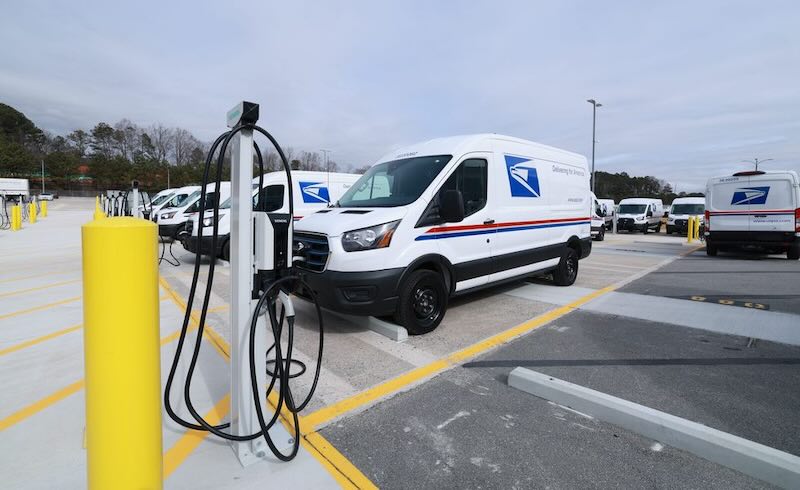The United States Postal Service (USPS) has unveiled its first set of all-electric delivery vehicles and charging stations at its South Atlanta Sorting and Delivery Center, accelerating the agency’s transition to a cleaner fleet. How far along is the USPS in its goal to convert its delivery trucks to electric vehicles (EVs)?
The Postal Service plans to deploy a fleet of 66,000 EVs over the coming years. This will include procuring 45,000 “Next Generation Delivery Vehicles” (NGDVs) from Oshkosh and purchasing over 20,000 commercial EVs from Ford and other automakers. The agency showcased some of its first Ford E-Transit battery-electric vans at the Atlanta event.
To support these vehicles, the USPS is building out EV charging infrastructure across its facilities. It aims to convert about 400 centers into EV hubs with charging stations that will serve larger delivery areas. Three companies – Siemens, Rexel/ChargePoint, and Blink – will manufacture the Postal Service’s first 14,000 chargers.
This is a massive undertaking. Many of the Postal Service’s 217,000 trucks are decades old. Electrifying the fleet is part of a $40 billion modernization strategy to improve USPS operations and sustainability. As John Podesta, senior advisor to the president, noted, this effort will help make EVs commonplace across the country.
The transition brings up some key questions. How quickly can USPS roll out chargers to support 66,000 EVs? What routes will the electric trucks serve first? How will cold weather impact battery performance? What facility upgrades are needed to handle high-voltage charging systems? Does the agency have the workforce and expertise to maintain an all-electric fleet?
While challenges remain, the Postal Service’s EV delivery trucks promise major efficiency and environmental gains. They align with the Biden administration’s goals to electrify the federal fleet and incentivize American manufacturing. If successful, the shift could influence wider EV adoption and build public awareness of the technology. As more electric mail trucks hit the road, they’ll become a familiar sight in neighborhoods nationwide.
